
For the first time in 30 years, Fire Emblem Shadow Dragon & the Blade of Light is coming to the West for Switch. How has it aged?
After Nintendo’s ultimatum and almost being abandoned, in 2020 we were able to celebrate the thirtieth anniversary of Fire Emblem, a saga that was born in 1990 and that the Japanese wanted to celebrate in a big way by bringing, for the first time outside of Japan, Fire Emblem: Shadow Dragon & the Blade of Light translated. Today we show you our Reviews of how Nintendo’s first contact with strategy was and how well it is played today. The reading turn begins now!
Marth travels to the west
Many of us felt identified when we saw that Nintendo Direct in which the arrival of this title on Nintendo Switch was announced. The first time we saw Marth in the West it was thanks to Super Smash Bros. Melee, so many of us wonder where that swordsman had come from.
Fire Emblem: Shadow Dragon & the Blade of Light places us at a time when Marth has been exiled from his homeland, which has been controlled by a powerful wizard. Thanks to this port we have been able to experience first-hand a story full of epic and humanity that has made us understand the origin and symbolism of the Dragon Emblem and the legendary Falchion.
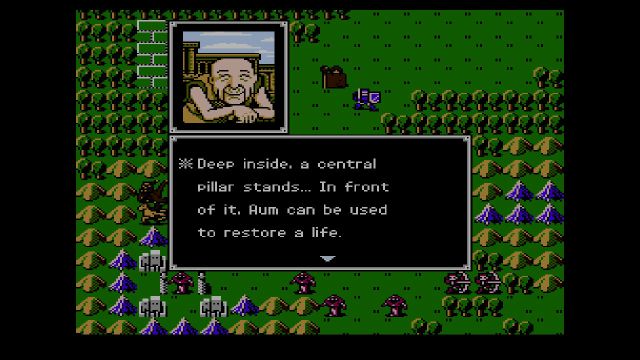
Throughout 25 chapters we will be defeating our enemies with the help of the allies that we will be rescuing from villages and recruiting them from the enemy ranks. We have been surprised by the enormous amount of characters that we can get for our army, reaching 20 characters in just 10 chapters.
Although it seems that this would give us variety, the reality is very different. Only a few of our units stand out and most appear at the beginning. In fact, new recruits tend to always arrive levels behind and share class with the “veterans” of the team, so you always end up pushing them aside. And it is not that there is an empathic reason to maintain them, since there are no supportive conversations or moments in history in which they intervene beyond the protagonists.
The beginning of an inheritance
The weapons have peculiarities that began in this first title. For example, swords have more precision and double attack chance than spears at the cost of doing less damage. The same is true in classes with fast pegasi and powerful heroes at the cost of lower defense.
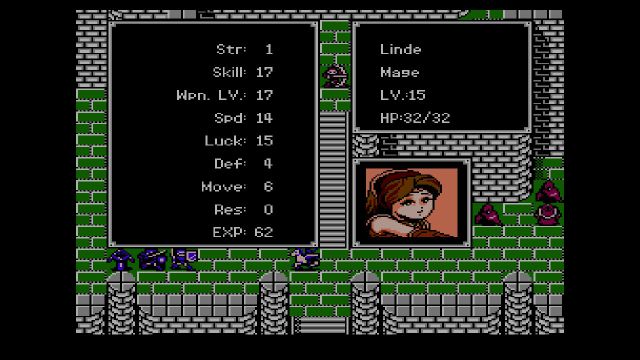
However, only 4 classes can promote a more powerful one, leaving as many as the heavy knights or thieves marginalized. This adds to the unit and class imbalance that exists in the game and maximizes the feeling that only some units are truly powerful and useful in battle.
The structure of the story is very predictable. During the 15 hours that the title lasts, in practically all the maps you rescue an area, take the castle and eliminate the enemies that remain inside. But not everything is bad at the design level, since we have been surprised by the variety of maps and situations that the NES title proposes. Many scenarios that appear here have been inspiration in later installments such as the typical desert map or the assault on a fortress.
Although we understand that the developers wanted us to adapt to the situations that each map offers us, most of them are played practically the same and offer us very similar moments. The artificial intelligence of the enemies leaves a lot to be desired. It is illogical for an archer to prioritize attacking a paladin when his attack is most effective against a Pegasus knight within range. But what has surprised us the most is that they are designed to attack Marth no matter what situation your allies are in or find themselves in.
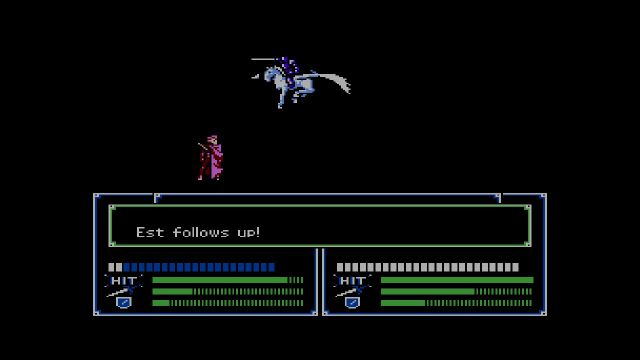
There are also design decisions that cut the pace of the chapter. If you have played any title in the saga, the car will sound like an object store. In Fire Emblem: Shadow Dragon & the Blade of Light it exists, but it is only accessible from certain points on the map, as if it were an armory. Every time we want to leave an object (or pick it up) we must physically go to the place. This would not be a problem if it were not for the fact that we do not have a previous menu before starting the battle beyond the selection of units. We are unable to locate units, view the map, or access our inventory.
A 1990 game on Switch
As for the Switch port, we are somewhat disappointed. They have added save points, turn back or speed increases, but we feel like they need more options and polish the ones they have. We have had more than one dislike for loading a previous save point because there is no confirmation step; or the soundtrack, although good (and repetitive), is boring when you put the speed x2. This option is essential in such classic games due to the slowness of the cursor and the movement of the characters.
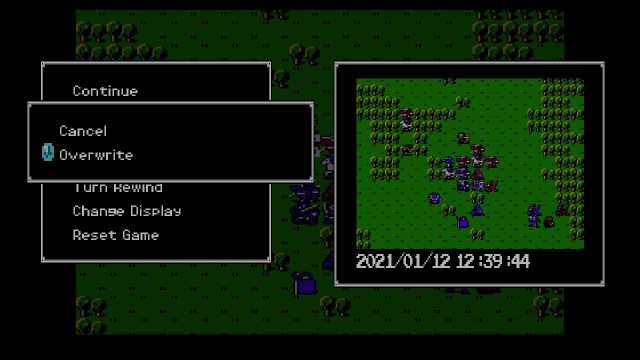
But, in the end, these are all changes that affect the game externally. We understand Nintendo’s intention to respect the work, but we must take into account the facilities of the player to face this type of game. Fire Emblem: Shadow Dragon & the Blade of Light will be anything but an accessible game. As in the original work, we must press each character one by one to discover their complete journey, as well as their statistics.
This wouldn’t be necessary if it weren’t for the fact that we don’t have that typical pre-battle prediction either. We can only guess what can happen by comparing your statistics with that of the enemy before facing him. Although in the end we will always opt for the “let’s see what happens” using the save points.
The art of NES
Artistically it enjoys the typical NES sprites using a very cool color palette. On the map, where we organize our units and think the strategy, the design is simple but effective to outline terrain, units and locations. When we decide to attack our enemy, the screen will move closer to experience the attack movements in the first person and thus perceive the terrain and the characters in greater detail.
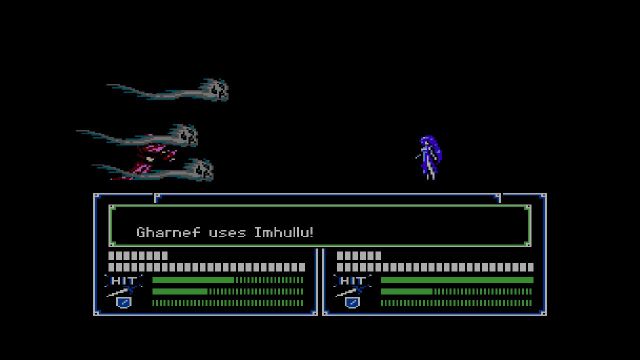
The animations have pleasantly surprised us by their authenticity. In fact, many of the visible ones remained until the two Game Boy Advance games, modifying and increasing their quality, but maintaining their essence. Sadly, on the other side is character design. Except for the most important, many use the same model but changing the color. All the more compelling reason to believe that even the developers themselves knew that they had an excessive amount of characters.
CONCLUSION
Playing the classics of the sagas is essential to understand the games to come. Fire Emblem: Shadow Dragon & the Blade of Light is an example of this because it has marked the playable base that still persists, but its version on Switch is not quite rewarding. The classic has the technical limitations of yesteryear and the added functions do not quite replace them. Playable it is rough and there are decisions that make it a not very accessible game. Not because of its complexity, but because of the lack of information it offers the player. However, it is appreciated that we have been able to live Marth’s adventures for the first time in the West, so we end our turn and we give it to Japan so that it can move token and can bring us the rest of the titles of the saga located.
THE BEST
- An NES classic coming to the west for the first time
- Its base is an absolute reference for later games
WORST
- Rough gameplay and mechanics
- Great imbalance of the characters
- Your units are simple war machines
- More features are missing to make it more accessible on Switch
Improvable
It may have acceptable elements and be entertaining, but overall it’s an experience that won’t leave a mark.
